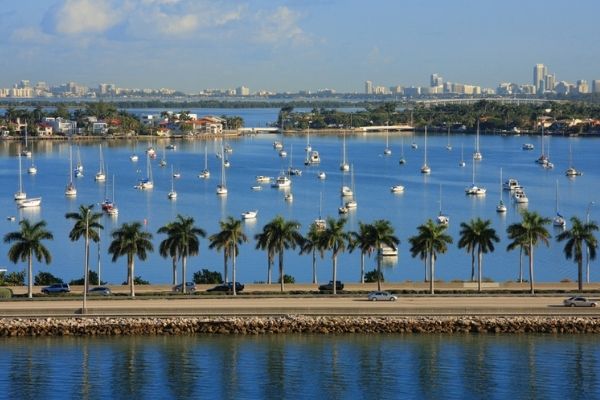AHA's reputation as an elite school with an exclusive admissions policy and rigorous academics has become well known. Now, AHA International School is opening its doors to all students from around the world, mindful of society's need to educate a new generation of diverse global citizens. The program integrates liberal arts, natural sciences, math, social sciences, technology, physical education and sports.
Tuition: $25,600 (day students); $49,475 (boarding students)
Business Type: Private
Institute Type:
Age Range: 12-19
Gender: Mix
Curriculum:
Number of Students:
Percentage of International students:
Country: United States
City: Greensboro
International Airports: Greensboro
Accommodation:
Transport:
Food:
Courses: Principle of Management, Business Communication
| Course Name | Duration | Minimum Age | Level | Fees | Intake | More Details |
|---|
| Visa Name | Documents Needed | Visa Application Fees |
|---|---|---|
| M1 |
|
$160 |
| F1 |
The $40,000 should be shown as your bank balance and the remaining $40,000 can be shown as bonds, fixed deposits, shares, debentures or mutual funds. If the student has lesser funds than what is required, then he/she will have to justify how they will be able to show the balance which will be necessary to study abroad. |
$160 |
| Long Visa | Offical Letter from the School Receipt of Accommodation booking |
£95 |
UPDATED: AUGUST 26, 2020

The American education system offers a rich field of choices for international students. There is such an array of schools, programs and locations that the choices may overwhelm students, even those from the U.S. As you begin your school search, it’s important to familiarize yourself with the American education system. Understanding the system will help you narrow your choices and develop your education plan.
PRIMARY AND SECONDARY SCHOOL
Prior to higher education, American students attend primary and secondary school for a combined total of 12 years. These years are referred to as the first through twelfth grades.
Around age six, U.S. children begin primary school, which is most commonly called “elementary school.” They attend five or six years and then go onto secondary school.
Secondary school consists of two programs: the first is “middle school” or “junior high school” and the second program is “high school.” A diploma or certificate is awarded upon graduation from high school. After graduating high school (12th grade), U.S. students may go on to college or university. College or university study is known as “higher education.”
GRADING SYSTEM
Just like American students, you will have to submit your academic transcripts as part of your application for admission to university or college. Academic transcripts are official copies of your academic work. In the U.S. this includes your “grades” and “grade point average” (GPA), which are measurements of your academic achievement. Courses are commonly graded using percentages, which are converted into letter grades.
The grading system and GPA in the U.S. can be confusing, especially for international students. The interpretation of grades has a lot of variation. For example, two students who attended different schools both submit their transcripts to the same university. They both have 3.5 GPAs, but one student attended an average high school, while the other attended a prestigious school that was academically challenging. The university might interpret their GPAs differently because the two schools have dramatically different standards.
Therefore, there are some crucial things to keep in mind:
Your educational advisor or guidance counselor will be able to advise you on whether or not you must spend an extra year or two preparing for U.S. university admission. If an international student entered a U.S. university or college prior to being eligible to attend university in their own country, some countries’ governments and employers may not recognize the students’ U.S. education.
ACADEMIC YEAR
The school calendar usually begins in August or September and continues through May or June. The majority of new students begin in autumn, so it is a good idea for international students to also begin their U.S. university studies at this time. There is a lot of excitement at the beginning of the school year and students form many great friendships during this time, as they are all adjusting to a new phase of academic life. Additionally, many courses are designed for students to take them in sequence, starting in autumn and continuing through the year.
The academic year at many schools is composed of two terms called “semesters.” (Some schools use a three-term calendar known as the “trimester” system.) Still, others further divide the year into the quarter system of four terms, including an optional summer session. Basically, if you exclude the summer session, the academic year is either comprised of two semesters or three quarter terms.
THE U.S. HIGHER EDUCATION SYSTEM: LEVELS OF STUDY
"The American system is much more open. In Hong Kong you just learn what the teacher writes on the board. In America, you discuss the issues and focus more on ideas."
A student who is attending a college or university and has not earned a bachelor’s degree, is studying at the undergraduate level. It typically takes about four years to earn a bachelor’s degree. You can either begin your studies in pursuit of a bachelor’s degree at a community college or a four-year university or college.
Your first two years of study you will generally be required to take a wide variety of classes in different subjects, commonly known as prerequisite courses: literature, science, the social sciences, the arts, history, and so forth. This is so you achieve a general knowledge, a foundation, of a variety of subjects prior to focusing on a specific field of study.
Many students choose to study at a community college in order to complete the first two years of prerequisite courses. They will earn an Associate of Arts (AA) transfer degree and then transfer to a four-year university or college.
A “major” is the specific field of study in which your degree is focused. For example, if someone’s major is journalism, they will earn a Bachelor of Arts in Journalism. You will be required to take a certain number of courses in this field in order to meet the degree requirements of your major. You must choose your major at the beginning of your third year of school.
A very unique characteristic of the American higher education system is that you can change your major multiple times if you choose. It is extremely common for American students to switch majors at some point in their undergraduate studies. Often, students discover a different field that they excel in or enjoy. The American education system is very flexible. Keep in mind though that switching majors may result in more courses, which means more time and money.
Presently, a college or university graduate with a bachelor’s degree may want to seriously think about graduate study in order to enter certain professions or advance their career. This degree is usually mandatory for higher-level positions in library science, engineering, behavioral health and education.
Furthermore, international students from some countries are only permitted to study abroad at a graduate level. You should inquire about the credentials needed to get a job in your country before you apply to a postgraduate university in the USA.
A graduate program is usually a division of a university or college. To gain admission, you will need to take the GRE (graduate record examination). Certain master’s programs require specific tests, such as the LSAT for law school, the GRE or GMAT for business school, and the MCAT for medical school.
Graduate programs in pursuit of a master’s degree typically take one to two years to complete. For example, the MBA (master of business administration) is an extremely popular degree program that takes about two years. Other master’s programs, such as journalism, only take one year.
The majority of a master’s program is spent in classroom study and a graduate student must prepare a long research paper called a “master’s thesis” or complete a “master’s project.”
Many graduate schools consider the attainment of a master’s degree the first step towards earning a PhD (doctorate). But at other schools, students may prepare directly for a doctorate without also earning a master’s degree. It may take three years or more to earn a PhD degree. For international students, it may take as long as five or six years.
For the first two years of the program most doctoral candidates enroll in classes and seminars. At least another year is spent conducting firsthand research and writing a thesis or dissertation. This paper must contain views, designs, or research that have not been previously published.
A doctoral dissertation is a discussion and summary of the current scholarship on a given topic. Most U.S. universities awarding doctorates also require their candidates to have a reading knowledge of two foreign languages, to spend a required length of time “in residence,” to pass a qualifying examination that officially admits candidates to the PhD program, and to pass an oral examination on the same topic as the dissertation.

CHARACTERISTICS OF THE U.S. HIGHER EDUCATION SYSTEM
Classroom Environment
Classes range from large lectures with several hundred students to smaller classes and seminars (discussion classes) with only a few students. The American university classroom atmosphere is very dynamic. You will be expected to share your opinion, argue your point, participate in class discussions and give presentations. International students find this one of the most surprising aspects of the American education system.
Each week professors usually assign textbook and other readings. You will be expected to keep up-to-date with the required readings and homework so you can participate in class discussions and understand the lectures. Certain degree programs also require students to spend time in the laboratory.
Professors issue grades for each student enrolled in the course. Grades are usually based upon:
Credits
Each course is worth a certain number of credits or credit hours. This number is roughly the same as the number of hours a student spends in class for that course each week. A course is typically worth three to five credits.
A full-time program at most schools is 12 or 15 credit hours (four or five courses per term) and a certain number of credits must be fulfilled in order to graduate. International students are expected to enroll in a full-time program during each term.
Transfers
If a student enrolls at a new university before finishing a degree, generally most credits earned at the first school can be used to complete a degree at the new university. This means a student can transfer to another university and still graduate within a reasonable time.
"I like that schedules are flexible, classes are fun, and the variety of activities I can participate in."
Xujie Zhao from China: Studying Computer Networking at Wentworth Institute of Technology in Boston
1. STATE COLLEGE OR UNIVERSITY
A state school is supported and run by a state or local government. Each of the 50 U.S. states operates at least one state university and possibly several state colleges. Many of these public universities schools have the name of the state, or the actual word “State” in their names: for example, Washington State University and the University of Michigan.
2. PRIVATE COLLEGE OR UNIVERSITY
These schools are privately run as opposed to being run by a branch of the government. Tuition will usually be higher than state schools. Often, private U.S. universities and colleges are smaller in size than state schools.
Religiously affiliated universities and colleges are private schools. Nearly all these schools welcome students of all religions and beliefs. Yet, there are a percentage of schools that prefer to admit students who hold similar religious beliefs as those in which the school was founded.
3. COMMUNITY COLLEGE
Community colleges are two-year colleges that award an associate’s degrees (transferable), as well as certifications. There are many types of associate degrees, but the most important distinguishing factor is whether or not the degree is transferable. Usually, there will be two primary degree tracks: one for academic transfer and the other prepares students to enter the workforce straightaway. University transfer degrees are generally associate of arts or associate of science. Not likely to be transferrable are the associate of applied science degrees and certificates of completion.
Community college graduates most commonly transfer to four-year colleges or universities to complete their degree. Because they can transfer the credits they earned while attending community college, they can complete their bachelor’s degree program in two or more additional years. Many also offer ESL or intensive English language programs, which will prepare students for university-level courses.
If you do not plan to earn a higher degree than the associate’s, you should find out if an associate’s degree will qualify you for a job in your home country.
4. INSTITUTE OF TECHNOLOGY
An institute of technology is a school that provides at least four years of study in science and technology. Some have graduate programs, while others offer short-term courses.
Country Name: United States
Capital: Washington, D.C.
Population: 328.2M
Currency: Dollar
Monthly Maintenance: $1000

Life in Country:
A life in the USA means having a wealth of options. With a surface area of a little under 10 million square kilometers, the USA is the third largest country in the world. Make the USA your new home and find your dream job in the US state of your choice. Whether you prefer a bustling metropolis or a quiet town, everybody will find their dream location in the USA. Let yourself be inspired by other US immigrants: Where do most immigrants live in America? Now it’s your turn: Make your own personal American dream a reality. A US Green Card opens all the doors to opportunity!
Table of contents
Green Card Lottery
Take the chance of living in the USA and apply for the official US Green Card Lottery!
US immigrants are spoilt for choice: Which of the 50 breathtaking US states should you live in? America is famous for its diversity and if you have already been there – either as a tourist or a student – will know what we are talking about when we say how beautiful and different ever corner of the USA is. Climates and people change as you go from the east coast to the west coast. No matter where you go in the USA, you are sure to meet Americans who will proudly tell you their family’s immigration story. According to the United States Census Bureau there were around 43.1 million first-generation (foreign born) people living in the United States in 2015 and they comprised about 13.5% of the U.S. population. And who knows, you may be next!
The population of America is just as multi-faceted as its climates, landscapes, flora and fauna! If you prefer the rugged mountains, isolation and an artic climate, then you might have Alaska in mind. Those who prefer the sun, beaches and a tropical climate will find everything they want and more in Florida. With a Green Card, your options are open!

Yellowstone National Park in the state of Wyoming
The climate in the USA is one of the most popular reasons why so many people dream of living in America. Below is a rough overview:
In the South, the climate is more tropical with hot, humid summers and pleasant temperatures in winter. If you want to bathe in the sun all day without the humidity, then Arizona, southern California, New Mexico and Nevada in the southwest might be the perfect place for you.
Residents in the Northeast get to experience all four seasons and the U.S. states of Maine, Vermont and New Hampshire are famous for their colorful fall foliage. Winter in the Northeast is often harsh with lots of snow and ice storms.
If you prefer high mountains and the alpine climate of the West, then you will feel at home in the Rocky Mountains. In the Rockies, the air is relatively dry and in winter you should expect heavy snowfall and below-zero temperatures.
Washington and Oregon, located in the northwestern corner of the USA, are well-known for being rainy. The charming island-dotted Pacific coast and the Cascade mountains, however, make up for all the rain.
When it comes to the total number of immigrants, California is by-far the most popular state for immigrants. In 2014, California was home to 10.5 million foreign-born people making 27% of its population immigrants. The most well-known cities in California are San Francisco, San Diego, and of course Los Angeles. Who doesn’t immediately think of Hollywood glam when they think of the city of angels? In recent years, California has also been immediately associated with the IT and high-tech industry in Silicon Valley.
TIP: Despite an 8-laned highway, dealing with traffic is all part of living in Los Angeles. Living close to your work has clear advantages and will save you time on your morning commute. Surprisingly, California also has many ski resorts.

The Hollywood Hills in Los Angeles, California
With 4.5 million immigrants, New York state ties Texas for second place. Everything that needs to be said about New York has already been said – but it is still not enough! New York City is by far the United States’ biggest metropolis. The Big Apple is home to financial institutions, overcrowded streets, exploding housing prices and expensive restaurants and at its center is Manhattan. If you are searching for a little more peace and affordable housing, then you might be more successful in Harlem, Brooklyn or on the other side of the Hudson River in New Jersey.
Texas is also home to around 4.5 million immigrants. The cowboy and barbeque-loving state of Texas is the second biggest and the second most populated US state. The Lone Star State is famous for being the only state besides Vermont that was an independent republic before becoming a U.S. state in 1846. Its capital is Austin although most people are more familiar with Houston. It has the second highest economy in the United States which is not a surprise because of its diverse economy – which is good for immigrants. A large part of its economy is boosted by oil companies as well as a developing tech-industry.
The sunny beaches of Florida are home to 4 million immigrants who are living their American dream to the fullest! It is not nicknamed the Sunshine State for nothing: Nowhere else in the USA has as many sunny days as Florida. Its beautiful weather and beaches as well as Everglades National Park attracts many tourists a year – and they all want to stay!
The most popular cities are Miami Beach, Fort Lauderdale, South Beach, Tampa and the area around Naples on the west coast. Tourism and agriculture are big factors driving Florida’s economy. Did you know that 50% of all citrus fruit comes from the Sunshine State?

Miami in the state of Florida
Many of America’s most famous people were immigrants. From scientists, writers and architects to politicians, athletes and artists: The USA gives immigrants a place to shine and immigrants are what make America great. The list of famous US immigrants is ever growing, but we would like to give you a taste of two prominent figures in American history.
Everyone recognizes the picture of the man with wild, white hair sticking out his tongue. Albert Einstein is the most famous and prominent physicist of all time. Nobody has influenced their field as much as this immigrant from Germany did. Naturally, every university in the USA wanted to host him as a professor. Albert Einstein first visited the USA in 1920 after Princeton University convinced him to come and give a lecture on his Theory of Relativity. Between 1930 and 1933, Einstein then traveled back and forth between Germany and California.
During his stay at the California Institute of Technology in Pasadena, Hitler came to power in Germany. On this day, April 17, 1933, Einstein refused to ever set foot in Germany again, moved to Princeton, New Jersey to work at the Institute for Advanced Studies and thus became a US immigrant. On October 1, 1940, he became a US citizen and lived in Princeton, New Jersey until his death.

Albert Einstein emigrated from Germany to the USA in 1933.
Even though you must be born in the USA to become president, there are still many political positions that are open to people born outside of the USA. Madeleine Albright, who was U.S. Secretary of State under President Bill Clinton from 1997-2001, is a prime example of what immigrants in the USA can achieve.
Madeleine Albright was born in former Czechoslovakia and in 1948 came to the United States with her parents who were fleeing communism. Her parents settled in Denver, Colorado and in 1957, she became a US citizen. She studied political science and received her master’s and doctorate degree from Columbia University in New York City. She worked for the National Security Council as well as Georgetown University as a professor. In 2001, she became the first female Secretary of State and a role-model for women and immigrants. Albright is still very active politically and was awarded the Presidential Medal of Freedom in May 2012.
Other influential US immigrants include movie producer Ang Lee, the actor and politician Arnold Schwarzenegger, the actress Charlize Theron, the soccer player Freddy Adu, the baseball player Sammy Sosa, the entrepreneur Liz Claiborne … and so many more!
The first step is moving to the USA and the second is deciding where you want to live. There are a few things you should know before you start searching for a house or apartment in the USA. Firstly, it helps if you already have a job because a sizable percentage of your salary will be used for housing in the USA.
Many Green Card holders live with family or friends when they first move to the USA. Even though it is possible to search for a house or apartment online (i.e. before you leave for the states), it is much easier to get housing when you are already in the USA. Moreover, most landlords want to meet their potential tenants personally and you want to see the place where you might be living in. Searching for housing in the USA works best when you are already in the USA.
As a fresh American resident searching for a house or apartment, you may be confronted with some unfamiliar words. So that you can concentrate on searching for a house rather than a word in a dictionary, we would like to introduce you to some English words you will come across. Below is a list of important housing terms as well as tips to finding your dream home:
As a Green Card holder, you have the right to buy or rent property in the USA. There are a few things, however, that you should be aware of. Many landlords require you to show them your Social Security Card before signing the contract. Also, you will need to show proof of your salary. Usually, a pay slip will suffice. If you do not yet have a job or the money needed, someone else can vouch for you.

Before you sign any contract, you should make sure that you completely understand all the terms and conditions. How long is the contract for? If I move out, how early in advance must the landlord know (usually 30 days)? Who is responsible for repairs? Are utilities included in the rental price? Will there be additional costs (water, gas, electricity, trash disposal, etc.)? Take the time to go over every word of the contract and, if needed, have a native speaker help you.
For many people, buying a house in the USA is a big step towards fulfilling their American dream. Buying a house is a huge responsibility, but has many advantages. If you are interested in buying a house, you should contact a real estate agent to help you. It is best to ask friends or family if they have recommendations. Many Americans who buy a house take out a loan which is called a “mortgage”. Make sure to get financial advice from a bank before making any big purchases.
If you do buy a house, the first thing you should do is buy the appropriate insurance. There are several types of housing insurances, e.g. for weather damage, fire or theft, so make sure you contact a trustworthy insurance salesman.
Tip: Don’t forget to keep USCIS (U.S. Citizenship and Immigration Services) informed of your new address.

Participating in the Green Card Lottery is the first step to emigrating to the USA. As each day goes by, the USA feels more and more like home and before you know it, you will be applying for a US citizenship! Becoming a US citizen is the ultimate fulfillment of the American dream for many around the world.
Receiving the US citizenship is your way of showing your loyalty and commitment to the United States of America. By accepting, you agree to the responsibilities of being a US citizen and agree to respect the laws of the country and its peoples. A US citizenship gives you the same rights and privileges that all Americans have. A US citizen has more responsibilities than a Green Card holder, but the privileges are worth it.
All US citizens, for example, have the right to vote in all elections and help decide who will become President of the United States. Moreover, citizens can serve on a court jury and apply for federal and state jobs which are only reserved for American citizens. There are no limitations to the amount of time you spend outside of the USA if you are a US citizen. Furthermore, citizens can issue petitions to have family members come to the USA and get a Green Card.
The process of applying for US citizenship is called naturalization. Green Card holders or children of US citizens can apply for American citizenship. Generally, the following requirements must be met to be eligible:
If any of the following points apply to you, then it is possible that your application process will be different:
Those who successfully apply for a US citizen can be proud to call an American passport their own.
Taking on the US citizenship is very exciting. Understandably, it also raises the question of what will happen to your current citizenship. For example, do you need to give up your citizenship to become an American? According to US law, becoming a US citizen does not mean having to give up your previous citizenship. This means that having dual citizenship in the USA is allowed.
People applying for a US citizenship, however, must find out if their home country allows for a second citizenship. Some countries require citizens to meet certain requirements before taking on a second citizenship. It is important to inform yourself of US as well as your home country’s requirements so that you may successfully become a dual citizen!